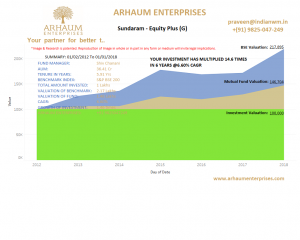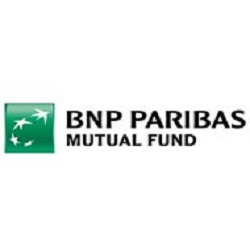It may just take luck for a person to acquire or make wealth. However, it would take a lot more to keep holding on to that wealth. At the bottom of the things we do and the way we live life is money. Protecting wealth over a period of time, especially across generations is not easy. There are just too many factors that pose a risk to your wealth and one must be very well protected from all sides. In this article we take a birds eye view at picture of protecting wealth and explore a few strategies or ideas that you can apply in your lives.
Wealth Protection: The True Meaning
Wealth Protection may come with the question: What is wealth? The dictionary definition says it is an abundance of worldly possessions. With the uncertainties prevailing in our lives, it is very important to protect your wealth. Most people focus on growing their wealth but protecting your wealth is just as important. While you can’t always predict life’s changes, you can plan ahead to help protect your finances from being diminished. Without adequate protection, you will be vulnerable to the nasty effects of a chance misfortune which may cause financial losses. Hence protecting wealth must assume a very critical part. Below of the few simple connotations that we can derive for term ‘protection’:
Types of protection:
- Protection of ownership:
- Protection of value:
Risks to Wealth:
- Protection from risks / uncertainty:
- Protection from usage:
Protection of ownership:
Ownership protection means ensuring that you and/or your loved ones continue to own the wealth that belongs to you. Often protection of ownership is required to protect against the following risks:
- risks that arise on ownership issues specially in case of property transfers and inheritance
- risks to ownership of business assets and capital if legal fool-proof work is not done
- risks to unattached / personal wealth in case you are suffering from huge losses or claims
The following are few ideas by which we can protect the ownership of our wealth & assets
- Legal Documentation: Proper legal documentation and ownership records of all family / personal assets. All the records / documents must be safeguarded and stored at a place which is known & accessible to you and your lawyers/ spouse, etc. in case of any eventuality. Due diligence and audit of title / ownership documents must be done in case of any purchase of assets or business stakes, especially property.
- Estate Planning: It is about declaring successors to your wealth and the proportion of distribution through proper estate planning and making your ‘will’. One may also look at formation of trusts to oversee large properties or businesses. A non-existent or outdated will may mean passage of assets to unwanted persons and undue financial burdens to loved ones.
- Court Attachments: One might do well to keeping business entity distinct from self. This means protecting personal assets safe from payments due to creditors and other claims on business. One idea is limiting your civil liability through formation of Private Limited Company, subject to extant laws. In proprietorship & partnership firms, the personal wealth is not treated distinct from that of the owners or partners. Also from an individual’s perspective, retirement benefits like pension, PPF, EPF and gratuity cannot be attached by authorities or under any decree of court.
Protection of value:
Protection of value means the protection of the purchasing value or worth of money. Due to inflation or price rise, the value of money decreases over time and the thus, in order to retain its purchasing power, the amount money has to rise. Thus, one must always keep in mind the ‘real returns’ or value of money while committing to any investment or other avenue. In addition to this, the following points should also be kept in mind.
- Post Tax Real Returns: After having appreciated the concept of real returns, the next step is to look at post tax real returns, i.e., looking at the returns after tax, and then adjusting for inflation effect. Thus, if an instrument giving 8% returns, taxable at say 30%, the post tax returns will be (8%-2.4%) 5.6%. In an environment with an average inflation of say 7%, the real post tax returns would then be a negative of 1.4%.
- Idle Money: In the above above case, if your money is kept idle, you will be depreciating your money at the rate of inflation. One should minimise idle money and put aside money into avenues that preserve capital. Though savings bank accounts with deregulated interest rates are a bit attractive, mutual fund liquid funds and other debt products are options that one should explore.
Protection from usage:
This is a very broader & general idea that highlights the need to have proper management and usage of wealth, especially the business ventures and investments.
- Avoiding Personal assets as collateral: Taking up business or other loans by putting your home or other personal property as collateral must be avoided as far as possible. A basic minimum wealth should be kept intact at all times and should strictly be used only as the last resort after exploiting every other opportunity.
- Unprofitable expenditures: Unwarranted spending on assets, businesses which is not required. Further spending money on assets that depreciate rather than appreciate over time or incur expenses to maintain rather than generate income are to be avoided. Excess spending on shopping, life-style, etc. is highly undesirable and further, buying unrequired assets on loan is a strict no.
- Avoiding aggressive risks, fictitious business venture, get-rich-quick schemes: There are no free lunches and never an easy money. It would be better if we can avoid shortcuts to creating wealth as almost certainly they can be disastrous. Never invest if you do not fully understand how the scheme/business works or if you are not sure of the management’s credibility and expertise.
- Diversification of risks: The idea is to optimally spread your business risks and investment risks such that your capital and/or income is not jeopardised. It should work towards having investments in and earnings from multiple sources.
- Hedging against risks: Business risks or risks of exposure to say commodities, currency, metal prices, etc. can be safeguarded by hedging
- Investing in right asset classes for right duration: When it comes to investing, selecting the right asset class is a most important. An overexposure or underexposure to say equities can both be harmful for creating wealth. Matching the right asset class with the right desired duration of investment and your risk profile is what is required.
Protection from risks / uncertainties
After having taken all precautions and necessary planning in management of wealth, still life may throw up surprises or situations wherein all planning may come to fail. There are a lot of uncertainties in life and we should best avoid or reduce taking exposure to such risks and at the same time prepare ourselves for the worst, in case anything goes wrong.
- Risks to life & health: An unfortunate event can happen anytime and anywhere to anyone. Specifically, there can be death, disease or illness, disablement, etc. which can put severe financial pressure at the worst of the times. Taking ‘adequate’ insurance thus becomes very critical for continued financial security of your family. Life Insurance, Health Insurance, Personal Accident cover for self & family members are few very critical covers that one should take after consulting your advisors.
- Risks to property / assets: Similarly, protection of business property/ assets, factory, shop, home & home contents, goods in transit, etc. becomes very important and the loss therein may result in liability and financial losses. There are many general insurance products that can be explored. However, as a practice, we should take adequate safe precautions in construction, maintenance & storage of such property.
- Risks to reputation / profession / : Apart from the tangible risks, there are also other risks that businessmen and professionals or officers are exposed. Again products like Professional Indemnity, Directors & Officer’s Liability, Public Liability, Commercial General Liability, Money Insurance, where one is protected against losses, suits, damages, claims, loss to customers, third parties, any many other risks.
Protection of wealth is a very vast subject. The idea cannot be justified in couple of pages, though a fair understanding can be built up. Wealth protection goes beyond protecting your investment and it extends to protection from the happenings in your lives and the risks that you are exposed to. After all, almost everything, directly or indirectly generally ends up in rupee terms. And when we realise this, our approach to life and everything that we may do will have an element of protection somewhere. Wealth protection is not an act or event but an attitude and philosophy to follow.




